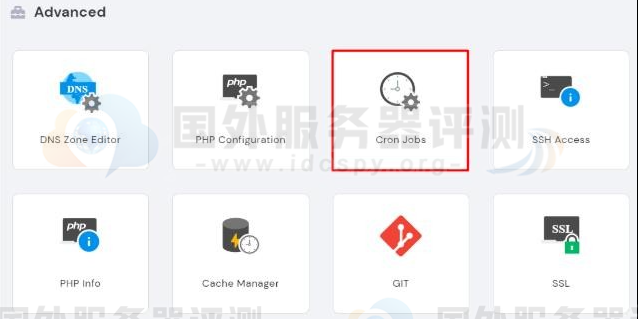很多人误以为shell脚本只能在命令行下使用。其实shell也可以调用一些GUI组件,例如菜单,警告框,进度条等等。你可以控制最终的输出,光标位置还有各种输出效果。下面我将介绍一些工具,帮助你创建强大的,互动的,用户友好的 Unix/Linux shell脚本。我在FreeBSD和Linux下测试过这些工具,不过其他UNIX系列的操作系统应该都支持的。
1. notify-send 命令
这个命令可以让你通过通知进程发送一个桌面通知给用户。这可以用来向用户发送提示,或者显示一些信息而不用打断用户工作。你需要安装如下软件包:
1. $ sudo apt-get install libnotify-bin
2.
下面这个例子展示了如何从命令行向桌面发送一个简单的消息:
1. notify-send "rsnapshot done :)"
2.
输出:

下面是一个复杂一点的例子:
1. ....
2. alert=18000
3. live=$(lynx --dump http://money.rediff.com/ | grep 'BSE LIVE' | awk '{ print $5}' | sed 's/,//g;s/\.[0-9]*//g')
4. [ $notify_counter -eq 0 ] && [ $live -ge $alert ] && { notify-send -t 5000 -u low -i "BSE Sensex touched 18k"; notify_counter=1; }
5. ...
输出:

这里的参数解释如下:
- -t 5000:指定超时的时间,毫秒
- -u low:设置是否紧急
- -i gtk-dialog-info:通知图标,你可以指定图标 -i /path/to/your-icon.png
2. tput 命令
这个命令是用来设置终端特性的:
- 移动光标
- 获得终端信息
- 设置前景和背景色
- 设置粗体模式
- 设置反模式等等
举例:
1. 01 #!/bin/bash
2.
3. 02
4.
5. 03 # clear the screen
6.
7. 04 tput clear
8.
9. 05
10.
11. 06 # Move cursor to screen location X,Y (top left is 0,0)
12.
13. 07 tput cup 3 15
14.
15. 08
16.
17. 09 # Set a foreground colour using ANSI escape
18.
19. 10 tput setaf 3
20.
21. 11 echo "XYX Corp LTD."
22.
23. 12 tput sgr0
24.
25. 13
26.
27. 14 tput cup 5 17
28.
29. 15 # Set reverse video mode
30.
31. 16 tput rev
32.
33. 17 echo "M A I N - M E N U"
34.
35. 18 tput sgr0
36.
37. 19
38.
39. 20 tput cup 7 15
40.
41. 21 echo "1. User Management"
42.
43. 22
44.
45. 23 tput cup 8 15
46.
47. 24 echo "2. Service Management"
48.
49. 25
50.
51. 26 tput cup 9 15
52.
53. 27 echo "3. Process Management"
54.
55. 28
56.
57. 29 tput cup 10 15
58.
59. 30 echo "4. Backup"
60.
61. 31
62.
63. 32 # Set bold mode
64.
65. 33 tput bold
66.
67. 34 tput cup 12 15
68.
69. 35 read -p "Enter your choice [1-4] " choice
70.
71. 36
72.
73. 37 tput clear
74.
75. 38 tput sgr0
76.
77. 39 tput rc
78.
输出:

3. setleds 命令
这个命令可以让你控制键盘灯,例如打开数字键盘灯:
1. setleds -D +num
2.
关闭数字键盘灯:
1. setleds -D -num
2.
-caps: 清除大写灯
- +caps:打开大写灯
- -scroll:清除滚动锁
- +scroll:打开滚动锁
4. zenity 命令
这个命令可以显示GTK+的对话框,然后返回用户的输入。你可以用这个命令在脚本中显示信息,并要求用户输入信息。下面这段代码就是域名的whois查询:
1. 01 #!/bin/bash
2.
3. 02 # Get domain name
4.
5. 03 _zenity="/usr/bin/zenity"
6.
7. 04 _out="/tmp/whois.output.$$"
8.
9. 05 domain=$(${_zenity} --title "Enter domain" \
10.
11. 06 --entry --text "Enter the domain you would like to see whois info" )
12.
13. 07
14.
15. 08 if [ $? -eq 0 ]
16.
17. 09 then
18.
19. 10 # Display a progress dialog while searching whois database
20.
21. 11 whois $domain | tee >(${_zenity} --width=200 --height=100 \
22.
23. 12 --title="whois" --progress \
24.
25. 13 --pulsate --text="Searching domain info..." \
26.
27. 14 --auto-kill --auto-close \
28.
29. 15 --percentage=10) >${_out}
30.
31. 16
32.
33. 17 # Display back output
34.
35. 18 ${_zenity} --width=800 --height=600 \
36.
37. 19 --title "Whois info for $domain" \
38.
39. 20 --text-info --filename="${_out}"
40.
41. 21 else
42.
43. 22 ${_zenity} --error \
44.
45. 23 --text="No input provided"
46.
47. 24 fi
48.
输出:

5. kdialog 命令
这个命令和zenity很想,只不过它是为KDE/QT应用准备的。使用方法如下:
1. kdialog --dontagain myscript:nofilemsg --msgbox "File: '~/.backup/config' not found."
2.
输出






















